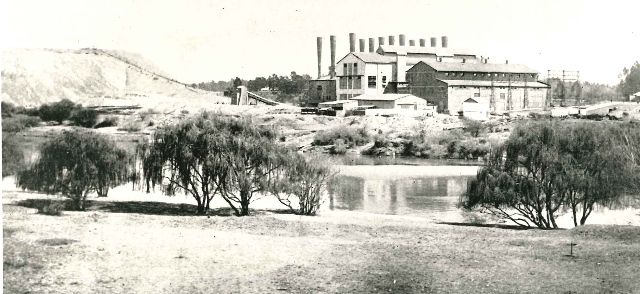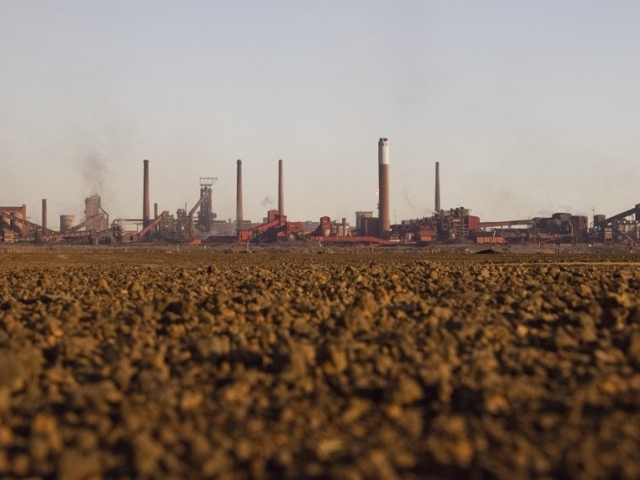
-
They’re Calling This Area Just Outside Of Johannesburg The Most Polluted Place On Earth
04 Mar 2024 by Tayla in Environment, Lifestyle, South Africa
[imagesource:creamermedia]
Just 30 minutes outside of Johannesburg lies the Vaal Triangle, a region of South Africa that Bloomberg is calling the most polluted place on Earth.
The 1.7 million people who live there are forced to endure the perilous onslaught of some of the planet’s most hazardous pollution, the publication noted, thanks in large part to a heavy veil of smoke that cloaks Africa’s biggest steel mill.
The smoke hangs melancholically from the highway into Vanderbijlpark, while to the southeast, close to Vereeniging, stands the Lethabo coal power plant. Despite its name meaning “happiness,” it relentlessly emits clouds of ash and toxic sulfur dioxide, devoid of any joy.
Continuing south, near a petrochemicals plant in Sasolburg, a nearby neighbourhood is frequently engulfed in the stench of rotten eggs, emanating from the hydrogen sulfide lingering in the air.
These toxins contribute to hundreds of premature deaths annually throughout the Vaal Triangle, while many others suffer from respiratory ailments. One in three South Africans are jobless, so there is tension in the fact that the factories here provide vital employment opportunities for residents. The fact that the factories release harmful emissions at alarming rates, so much so that Vereeniging is considered, by certain metrics, one of the most polluted cities globally, is the crux of the problem.
This situation starkly highlights the consequences of the world’s reliance on industries like steel, oil, and coal on human health and well-being. It also underscores the challenges of transitioning to a greener economy without jeopardising the livelihoods of workers dependent on traditional industries.
Vereeniging may not be widely recognised beyond South Africa, yet it holds significant importance in the country’s industrial landscape. It gained prominence as the location of South Africa’s initial coal discovery in 1878, a pivotal event that paved the way for magnates like Sammy Marks and Hendrik van der Bijl to establish one of the nation’s most densely industrialised areas.
Today, at the Vaal Teknorama museum in town, a poignant artefact resides: the final lump of coal extracted from the Cornelia mine rests on a desk, symbolising the town’s historical roots. A painting dating back to 1923 depicts a picturesque scene of the local Vaal River, where leisure boats gracefully navigate along a waterway flanked by steel mills and power plants, capturing a moment of prosperity and industry.

Image: Eskom
Yes, coal might have “ensured industrialisation and economic growth in the area,” as a plaque proclaims, but it also has a dark side.
Vereeniging regularly registers the highest concentration of microscopic emissions known as PM2.5, according to Bloomberg Green analysis of data from nonprofit OpenAQ, which runs an open-source network of over 4 000 sensors monitoring particulate pollution worldwide.
The often-invisible particulates travel deep into the lungs, which can lead to cancers and cardiac problems.
In the Vaal Triangle, many of them are emitted from industrial plants, which means they often include heavy metals and other toxins that are far more harmful than ordinary dust, according to Ranajit Sahu, an air quality consultant who has worked extensively on South African pollution.
The government has been meaning to address these issues for ages, now. Since the mid-2000s, it designated the region as the Vaal Triangle Airshed Priority Area, the first zone in which it would make a concerted effort to lower air pollution. But you know how things on the government’s radar end up; for the dogs.
Another classic excuse props up from Eskom Holdings and petrochemicals company Sasol, who have both repeatedly said they can’t afford or don’t have the space to install the equipment required by law to reduce sulfur dioxide pollution.

Image: Creamer Media
Perhaps no community in the vicinity has borne a greater burden for South Africa’s economic advancement than the township of Sharpeville, situated near Eskom’s Lethabo power plant. The facility burns low-quality coal, meaning more pollution is produced per unit of energy generated.
A 2017 study by a leading expert on air pollution attributed 204 premature deaths a year to the Lethabo plant. The study, conducted by UK-based consultant Mike Holland, was one of the first to detail the scale of power plant pollution in South Africa. It has since been challenged by Eskom, which nevertheless said its own research has found that it kills about 330 people annually across all of its plants.
People already suffering from pollution-based ailments do not qualify to work at the factories, even though the industries that make these people ill are seen by the community as the only sure source of jobs in the region.
The environment department argues that progress has been made on air quality in the Vaal Triangle, noting big emitters such as Sasol, ArcelorMittal and Eskom have taken some steps to curb their emissions.
But let’s be honest, in this industry (and dare I say country), it’s always going to be profit over people.
[source:bloomberg]
Latest News
-
Game, Seth, Match – Goodbye 2024
Hey Guys - thought I’d just give a quick reach-around and say a big thank you to our rea...
-
Breakfast Of Champions: Hollywoodbets Kenilworth Racecourse Breakfast Gallops Is Back!
[imagesource:CapeRacing] For a unique breakfast experience combining the thrill of hors...
-
Need NYE Plans? Cafe Caprice’s Night Of Enchantment Masquerade Party Could Do The Trick
[imagesource:howler] If you're still stumped about what to do to ring in the new year -...
-
Buckingham Palace Steps In After Staff Christmas Party Spirals Out Of Control
[imagesource:maxandeli/facebook] It's not just in corporate that staff parties get a li...
-
Designer Babies Are Running Into Trouble As Teens, Grappling With Being ‘Experiments’
[imagesource:here] Imagine being born with the weight of your parents’ version of per...
-






























